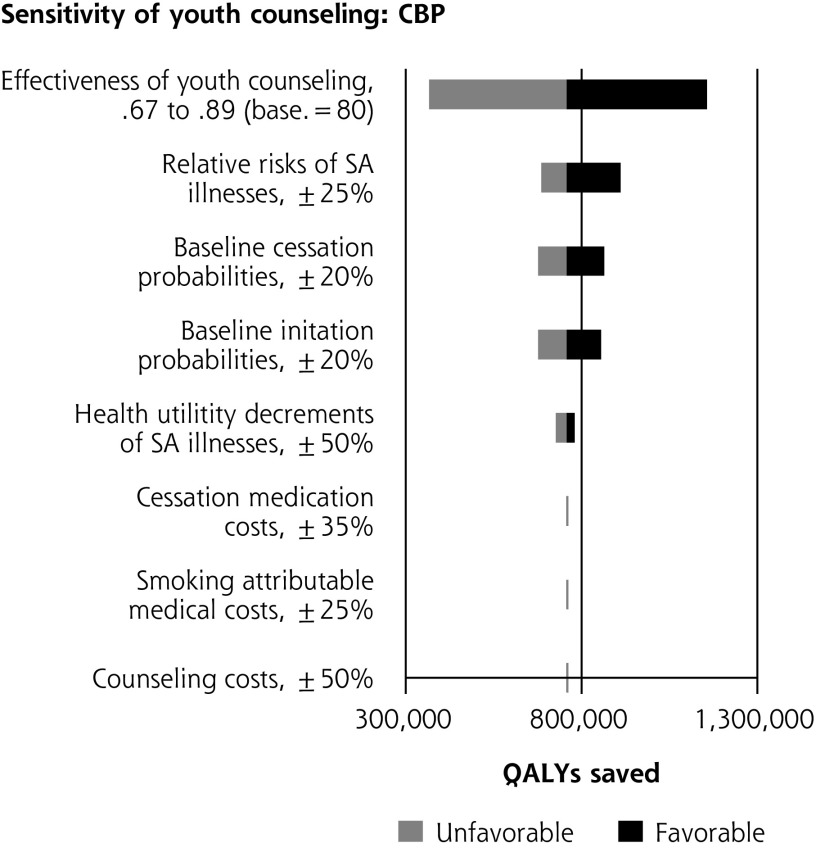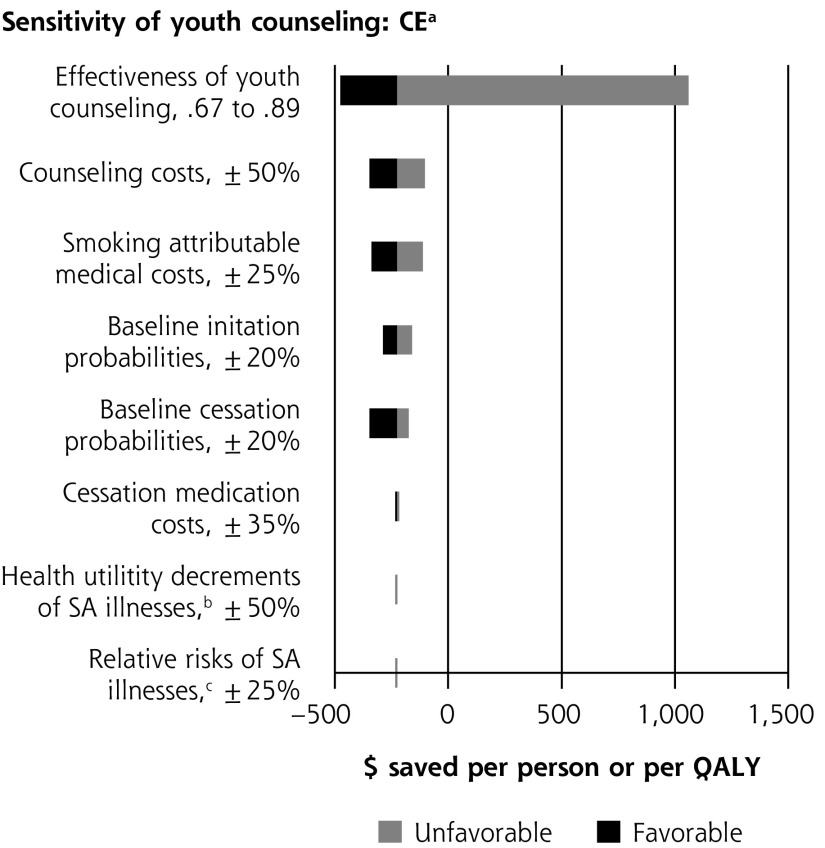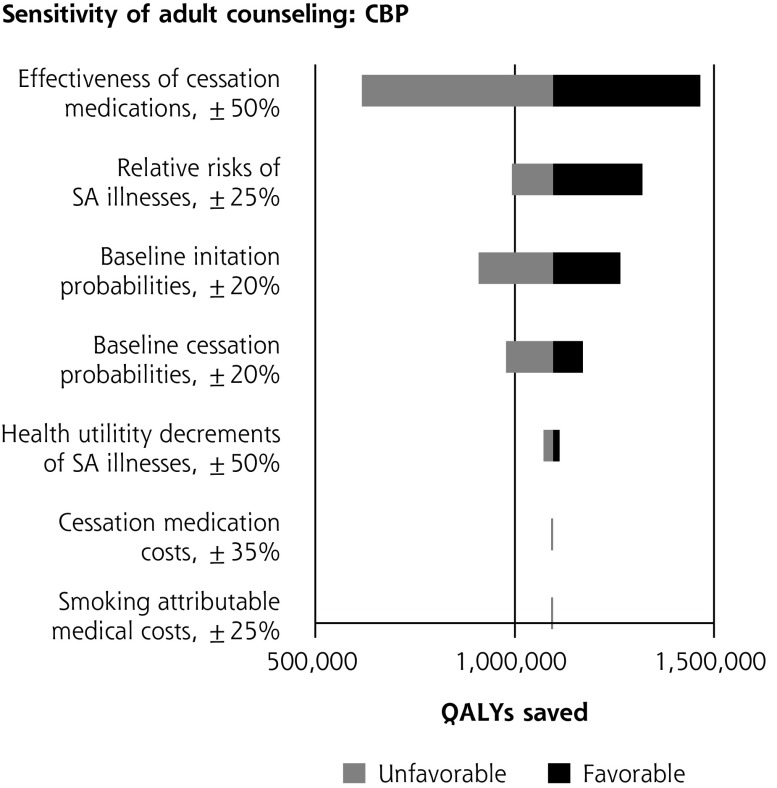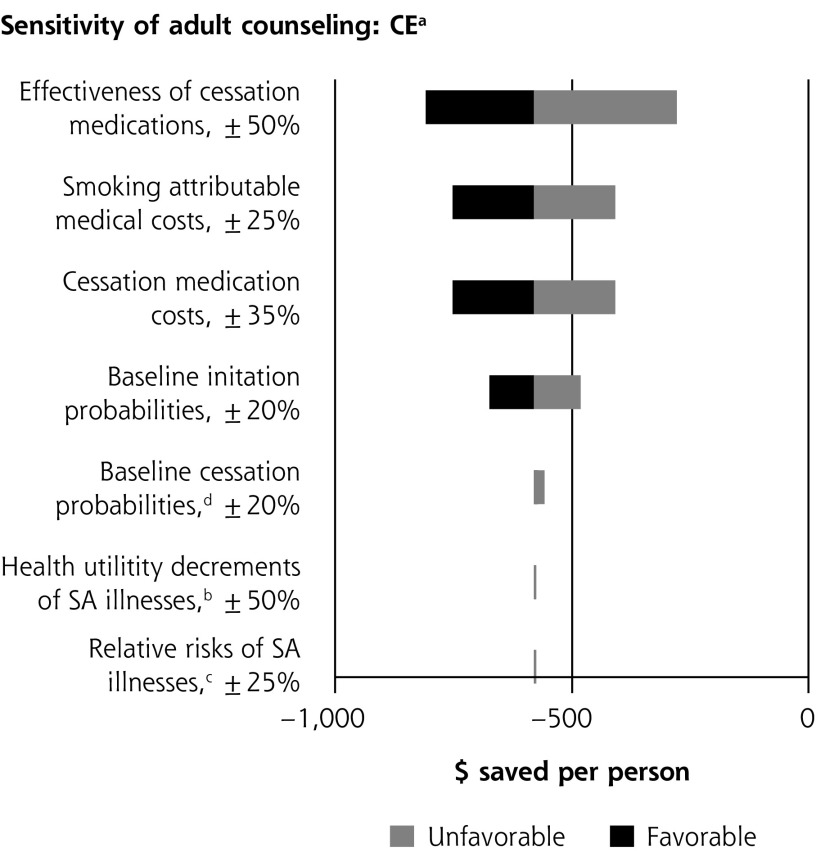Figure 2.
Sensitivity analyses of youth and adult tobacco use counseling.
CBP = clinically preventable burden; CE = cost-effectiveness; QALY = quality-adjusted life year; SA = smoking-attributable.
a When net costs are negative, cost-effectiveness is expressed as net cost per person. When net costs are positive, cost-effectiveness is expressed as net cost per QALY.
b Net costs are expressed as per person; therefore, changes in utility values do impact the estimate of cost-savings.
c Disease risks and smoking costs are determined by smoking status independently from each other in the model. Changes to the risk of illness therefore do not impact cost-effectiveness.
d Complex interactions between changing baseline cessation probabilities and intervention effect on cessation probabilities affect smoking-attributable costs and expenditures on cessation medications in both the baseline and intervention scenarios. As result, the impact of changing baseline cessation probabilities on cost-effectiveness is nonlinear.




